Do you have a question about the Honeywell MS9540 and is the answer not in the manual?
Details how to enable/disable features using the Single-Code Method.
Describes enabling/disabling features using the Single-Code Method.
Details enabling/disabling features using the Multi-Code Method.
Resets scanner to default communication protocol and settings.
Lists and explains bar codes for UPC/EAN symbologies.
Lists and explains bar codes for CODE 128 symbology.
Lists and explains bar codes for CODE 39 symbology.
Lists and explains bar codes for 2 of 5 symbologies.
Lists and explains bar codes for Codabar symbology.
Lists and explains bar codes for CODE 93 symbology.
Lists and explains bar codes for CODE 11 symbology.
Lists and explains bar codes for Telepen symbology.
Lists and explains bar codes for Plessey symbologies.
Options for enhancing bar code decoding capabilities.
Setting specific length constraints for bar code decoding.
Enables the RSS 14 bar code symbology for scanning.
Configuration options for RSS Limited bar codes.
Configuration options for RSS Expanded bar codes.
Bar codes used to set ISBT Code 128 configuration modes.
Bar codes to enable/disable user-defined ISBT concatenation sequences.
Configures scanner for light pen or wand emulation.
Configures the scanner for RS232 serial output.
Loads default settings for keyboard wedge mode.
Configures scanner for Optically Coupled Interface Adapter (OCIA).
Loads default format settings for IBM 46xx systems.
Options for controlling when configuration mode is active.
Settings for how many bar codes the scanner buffers.
Configures the number of successful scans required for data acceptance.
Sets the time before a rescanned bar code is considered new.
Configuration for scanner LED behavior.
Settings for scanner beep tones and behavior.
Sets delays between transmitted data characters to prevent buffer overflow.
Options for managing communication timeouts.
Commands the scanner can accept from the host device.
Allows users to define custom prefix characters for all data.
Defines code-specific ID characters for prefixes or suffixes.
Predefined standard prefix characters for data transmission.
Predefined standard suffix characters for data transmission.
Error checking method using a longitudinal redundancy character.
Allows replacing specific characters in scanned data.
Special formatting options for bar code data.
Formatting options specific to UPC/EAN bar codes.
Formatting options specific to Code 39 bar codes.
Formatting options specific to Code 11 bar codes.
Formatting options specific to Plessey bar codes.
Settings for data parity bits to ensure transmission accuracy.
Settings for the baud rate of RS232 communication.
Settings for hardware handshaking protocols like RTS/CTS.
Settings for software handshaking protocols like ACK/NAK.
Options for enabling different keyboard emulation modes.
Selects country-specific keyboard and scan code tables.
Selects the keyboard or system type for configuration.
Special features for keyboard configuration and behavior.
Settings for delays between scan codes.
Enables OCIA mode for serial interface communication.
Enables light pen emulation for bar code scanning.
Configures the minimum x-dimension for bar code elements.
Enables handheld laser emulation interface.
Enables host-controlled laser emulation.
Options for configuring IBM ports for communication.
Enables the USB interface for scanner communication.
Loads default settings for low-speed USB communication.
Enables USB keyboard emulation mode.
Enables Bi-Directional USB serial emulation for specific product classes.
Lists code byte values from 0 to 9 for configuration.
Maps code bytes to specific bar code types for configuration.
Maps ASCII HEX values to characters and keyboard equivalents.
Reference table for extended key codes used in scanner configuration.
Sets the IR sensor activation range for object detection.
Configures scanner behavior when in the stand.
Controls the functionality of the CodeGate button.
Configures different laser and scan modes for the scanner.
Enables PDF (Portable Data File) bar code scanning.
Enables scanning of MicroPDF and composite symbologies.
Enables linkage between 1D RSS and 2D portions.
Enables linkage for Code 128 without scanning the 2D portion.
Enables linkage for the 2D portion of microPDF.
Retrieves the Bluetooth address of the scanner.
Places the scanner in service mode for Bluetooth connections.
Requires a valid Bluetooth PIN for connections.
Enables transmission of the scanner's Bluetooth address.
Sets the scanner to sleep after 1 minute of inactivity.
Enables scanning while the device is in the cradle.
Stores scanned barcode data in memory for later transmission.
Automatically transmits barcode data when placed in the cradle.
Enables entry of quantities from 1 to 9999 for scanned items.
Disables the old serial programming mode for scan engines.
Enables TTL UART communication for scan engines.
Loads Cunningham specific default settings for scan engines.
Resets scanner to Metrologic factory defaults or OEM specific defaults.
Instructions for operating the scanner in serial program mode.
Details how to enable/disable features using the Single-Code Method.
Describes enabling/disabling features using the Single-Code Method.
Details enabling/disabling features using the Multi-Code Method.
Resets scanner to default communication protocol and settings.
Lists and explains bar codes for UPC/EAN symbologies.
Lists and explains bar codes for CODE 128 symbology.
Lists and explains bar codes for CODE 39 symbology.
Lists and explains bar codes for 2 of 5 symbologies.
Lists and explains bar codes for Codabar symbology.
Lists and explains bar codes for CODE 93 symbology.
Lists and explains bar codes for CODE 11 symbology.
Lists and explains bar codes for Telepen symbology.
Lists and explains bar codes for Plessey symbologies.
Options for enhancing bar code decoding capabilities.
Setting specific length constraints for bar code decoding.
Enables the RSS 14 bar code symbology for scanning.
Configuration options for RSS Limited bar codes.
Configuration options for RSS Expanded bar codes.
Bar codes used to set ISBT Code 128 configuration modes.
Bar codes to enable/disable user-defined ISBT concatenation sequences.
Configures scanner for light pen or wand emulation.
Configures the scanner for RS232 serial output.
Loads default settings for keyboard wedge mode.
Configures scanner for Optically Coupled Interface Adapter (OCIA).
Loads default format settings for IBM 46xx systems.
Options for controlling when configuration mode is active.
Settings for how many bar codes the scanner buffers.
Configures the number of successful scans required for data acceptance.
Sets the time before a rescanned bar code is considered new.
Configuration for scanner LED behavior.
Settings for scanner beep tones and behavior.
Sets delays between transmitted data characters to prevent buffer overflow.
Options for managing communication timeouts.
Commands the scanner can accept from the host device.
Allows users to define custom prefix characters for all data.
Defines code-specific ID characters for prefixes or suffixes.
Predefined standard prefix characters for data transmission.
Predefined standard suffix characters for data transmission.
Error checking method using a longitudinal redundancy character.
Allows replacing specific characters in scanned data.
Special formatting options for bar code data.
Formatting options specific to UPC/EAN bar codes.
Formatting options specific to Code 39 bar codes.
Formatting options specific to Code 11 bar codes.
Formatting options specific to Plessey bar codes.
Settings for data parity bits to ensure transmission accuracy.
Settings for the baud rate of RS232 communication.
Settings for hardware handshaking protocols like RTS/CTS.
Settings for software handshaking protocols like ACK/NAK.
Options for enabling different keyboard emulation modes.
Selects country-specific keyboard and scan code tables.
Selects the keyboard or system type for configuration.
Special features for keyboard configuration and behavior.
Settings for delays between scan codes.
Enables OCIA mode for serial interface communication.
Enables light pen emulation for bar code scanning.
Configures the minimum x-dimension for bar code elements.
Enables handheld laser emulation interface.
Enables host-controlled laser emulation.
Options for configuring IBM ports for communication.
Enables the USB interface for scanner communication.
Loads default settings for low-speed USB communication.
Enables USB keyboard emulation mode.
Enables Bi-Directional USB serial emulation for specific product classes.
Lists code byte values from 0 to 9 for configuration.
Maps code bytes to specific bar code types for configuration.
Maps ASCII HEX values to characters and keyboard equivalents.
Reference table for extended key codes used in scanner configuration.
Sets the IR sensor activation range for object detection.
Configures scanner behavior when in the stand.
Controls the functionality of the CodeGate button.
Configures different laser and scan modes for the scanner.
Enables PDF (Portable Data File) bar code scanning.
Enables scanning of MicroPDF and composite symbologies.
Enables linkage between 1D RSS and 2D portions.
Enables linkage for Code 128 without scanning the 2D portion.
Enables linkage for the 2D portion of microPDF.
Retrieves the Bluetooth address of the scanner.
Places the scanner in service mode for Bluetooth connections.
Requires a valid Bluetooth PIN for connections.
Enables transmission of the scanner's Bluetooth address.
Sets the scanner to sleep after 1 minute of inactivity.
Enables scanning while the device is in the cradle.
Stores scanned barcode data in memory for later transmission.
Automatically transmits barcode data when placed in the cradle.
Enables entry of quantities from 1 to 9999 for scanned items.
Disables the old serial programming mode for scan engines.
Enables TTL UART communication for scan engines.
Loads Cunningham specific default settings for scan engines.
Resets scanner to Metrologic factory defaults or OEM specific defaults.
Instructions for operating the scanner in serial program mode.
| Dimensions (WxDxH) | 78 x 198 x 56 mm |
|---|---|
| Maximum operating distance | 1.5 m |
| Power consumption (active) | 0.825 W |
| Pitch reading angle | 68 - 52 ° |
| Standard interfaces | USB, RS-232, RS-485 |
| Input voltage | 5 V |
| Power consumption (standby) | 0.6 W |
| Storage temperature (T-T) | -40 - 60 °C |
| Operating temperature (T-T) | 0 - 40 °C |
| Operating relative humidity (H-H) | 5 - 95 % |
| Weight | 149 g |
|---|
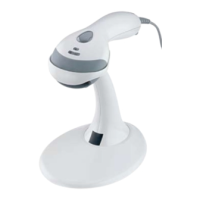
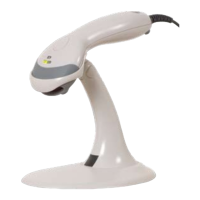

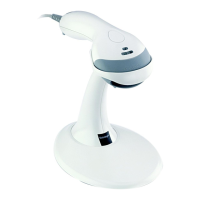
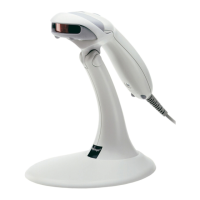

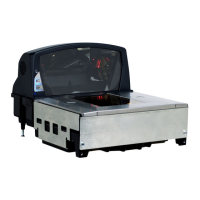
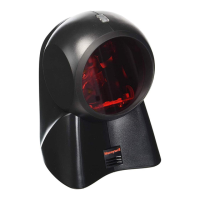
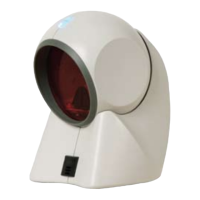
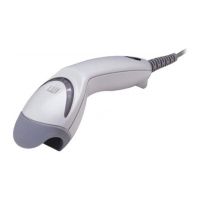


